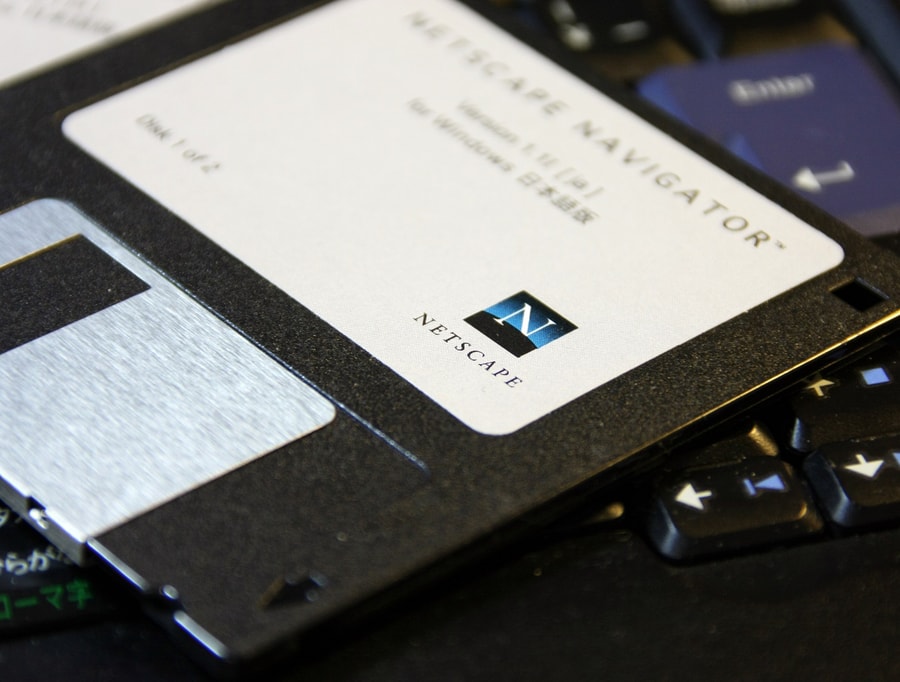With the 1997 public launch of ‘Earth’s largest bookstore’, Amazon founder Jeff Bezos gave many people their first glimpse into the exciting world of e-commerce. His fast-growing online store went on to make just over $252 million in its first full year, and the rest, as they say, is history. It was a similar story for French-born American entrepreneur Pierre Omidyar, whose company AuctionWeb made around $95 million in its second full year, on its way to becoming – yep, you guessed it – eBay.
But it wasn’t entirely plain sailing. With great success came great risk. The turn of the millennium brought the .com collapse, which saw thousands of internet businesses go under. Yet rather than heralding the death of e-commerce, the .com collapse did the opposite. Out of the ashes came a new wave of businesses that paved the way for online shopping as we know it today.
However, while the likes of Amazon and eBay are widely regarded as the pioneers of e-commerce, its origins can actually be traced back long before the 1990s.
The age of great dreams
The 1960s is a decade that will forever be remembered as a period of huge social, cultural and political change. Martin Luther King Jr.’s “I have a dream” speech. The assassination of President John F. Kennedy. The Moon landing. The Vietnam War. All pivotal moments in American and global history. But it was also a decade of monumental technological advances. The 60s saw the world’s first computer game, first supercomputer and first compact cassette tape. Often missed amongst these “giant leaps for mankind”, however, was the introduction of Electronic Data Interchange (EDI) and Electronic Funds Transfer (EFT).
Two of the main underlying foundations of e-commerce, EDI and EFT were first developed in the late 1960s by businesses becoming more aware of the difficulties that lie in the nature of paper-based commercial transactions. With the speed, cost and accuracy of paper systems being questioned, a number of different industries and businesses (including General Motors and Ford) began to turn to computer systems as the backbone of routine business transactions such as customer orders and invoices to and from suppliers.

In an age of huge technological advancement, e-commerce is often overlooked (Image courtesy of Flickr user James Vaughan)
With these rudimentary systems in place, however, problems began to arise. The process of transferring transactional data between two different companies using two different formats of EDI became a lengthy and understandably confusing one, and it wasn’t until the 1970s when large businesses eventually began to unify the data format. One of these formats, EFT, was a type of EDI that involved the transfer of funds between two financial institutions. Its introduction revolutionised the way companies paid employees, bought and sold stock, and paid taxes, fees and other business costs.
The 1970s, with seemingly constant technological advancements, saw these two data transfer formats play an increasingly important role for millions of businesses all over the world. However, two brand new inventions – the plastic credit card and automated teller machines (ATMs) – were starting to become increasingly popular. This would put EDI and EFT to the test throughout the 1980s, and well into the 1990s, which would become known as the internet era.
The birth of the internet
Despite being commonly thought of as a product of the late 80s and early 90s, the roots of the world wide web, much like e-commerce, lie in the 1960s and 1970s. With the 1969 introduction of Arpanet, the world’s first network run on packet-switching technology, users were able to transmit large and complex amounts of data simultaneously. Developed and funded primarily by the Advanced Research Projects Agency (ARPA) and the United States Department of Defence, it was opened up to university use in late 1969 for collaborative research and scientific purposes, a decision which, albeit accidentally, led to what many believe is the first e-commerce transaction – a sale of cannabis between students at Stanford Artificial Intelligence Laboratory and the Massachusetts Institute of Technology.
Throughout the 1970s, the development of the “connected web” took giant leaps forward, with the introduction of electronic mail in 1971, the world’s first PC modem in 1977, and the curse of the inbox, spam. The early 1980s brought about the introduction of TCP/IP, a transmission control protocol that linked all ARPA networks together. It also saw the launch of Domain Name System (DNS), essentially giving each IP address a human-friendly domain name, which would then be converted into the domain’s IP address once entered.

The Interface Message Processor (IMP)
HTTP & SSL
Throughout
the period of rapid technological change and expansion of the internet seen in
early-mid 90s, there was always the over-arching threat of cyber security. With
a growing number of reported attacks on networks ranging from large
institutions to individual PCs, users became ever increasingly aware of the
dangers of using the internet, especially for data communication.
Hypertext Transfer Protocol Secure (HTTPS), an evolution of the original web standard application protocol HTTP, was initially introduced in 1994 by Netscape Communications, fronted by now venture capitalist Marc Andreessen. Its release coincided with that of Netscape Navigator, the successor to the world’s first Graphical User Interface (GUI) browser, Netscape Mosaic. Essentially built as a secure protocol for transmission and communication of data between networks, the main aim of HTTPS is to authenticate the website and server being communicated with, preventing Man-in-the-Middle (MitM) attacks.
Working hand-in-hand with cryptographic protocols such as Transport Layer Security (TLS) and its predecessor SSL (Secure Sockets Layer), Netscape was able to set out the basic security protocols to enable the internet to grow rapidly, incorporating common applications from web browsing and email to monetary and sensitive data transfer.

The world's first GUI browser brought with it HTTPS, a revolution in early e-commerce. Image courtesy of Toshihiro Oimatsu via Creative Commons
eBay & Amazon
“The wake-up call was finding this startling statistic that web usage in the spring of 1994 was growing at 2,300 per cent a year. You know, things just don’t grow that fast.” With the internet experiencing a meteoric rise in popularity, Jeff Bezos, whilst working on Wall Street, saw the opportunity. Capitalising on the fact that traditional bricks-and-mortar book stores could only stock a limited number of books, Bezos launched Amazon, ‘Earth’s biggest bookstore”, out of his garage in Bellevue, Washington. With no physical selling location, it was able to offer internet consumers an almost unlimited range of books, many of which would be hard to find in local book shops. Its success was almost instantaneous.
Despite pouring the majority of its revenue straight back into growth, within two months the company was enjoying sales of $20,000 a week. In fact, aside from its net income staying relatively constant (due to the constant reinvestment in growth), Amazon’s yearly revenue figures have never dipped. It’s a shining example of e-commerce becoming an everyday constant in the life of average online consumers.
You know, things just don’t grow that fast.”It was a similar story for Parisian-born entrepreneur Pierre Omidyar. Having moved to the United States, Omidyar’s keen interest in new technologies led him to develop an early stage e-commerce platform named eShop, which was later bought by Microsoft. Then, in May 1995, he launched AuctionWeb, a new platform where auction enthusiasts could sell and bid on collectables ranging from Pez dispensers to rare coins. As the number of auctions on the site grew, so did its user base, and in January 1997 alone there were two million items listed on the website that we know today as eBay.Jeff Bezos, Amazon Founder
SEO & PPC
During the internet’s early days, when there was a finite number of websites online, directories like Yahoo! were the easiest way to quickly find interesting things on the web. However, as the number of websites skyrocketed, content started to appear quicker than it could be indexed. Although rudimentary search engines had been around since 1990 – notably Excite, Altavista and Lycos – it wasn’t until Larry Page and Sergey Brin introduced the world to Google in 1998 that we truly saw the impact that search engines could have on e-commerce.
However,
it’s fair to say that Page and Brin didn’t get off to the smoothest of starts. While
Google’s founding team was trying to work out the foundations of its results
pages and algorithms, marketers were able to take advantage, using black hat
tactics such as keyword stuffing and dubious backlinks to boost their organic
ranking. However, the various updates to Google’s algorithm over the years have
brought penalties for such tactics, whilst rewarding e-commerce companies that
focus on optimising their websites by providing informative, helpful and
relevant content.
The rise and rise of the App Store
With the internet rapidly becoming a constant in many people’s lives, attentions turned toward the development of mobile technologies, and a key area of focus was how mobile apps could play an important role in the development of B2C companies. Coming out of the 90s and early 2000s, where software on mobile devices was limited to basic, manufacturer-developed apps such as calculators, calendars and arcade games, 2007 and 2008 saw a surge in development of mobile applications. With Apple’s App Store and the Android App Store (now the Google Play store) both launched in 2008, tech companies clambered to get their products and services seen on these new platforms. With over 100 million downloads within the first 60 days of the App Store alone, e-commerce businesses that had previously relied on their website had a whole new channel through which to reach their audience.
The dark side of e-commerce
For every
example of a revolutionary new technology changing the world comes an
infinitely higher number of people or organisations that will try to exploit it.
And e-commerce is no exception.
Ask any
history buff about The Silk Road and they will more than likely tell you of the
ancient trade route running from the Mediterranean through Europe, the Middle
East and Asia, which served as a path to riches for traders from all over the
world. But whilst it’s impossible to attribute any one person to the formation
of
that Silk Road, the Silk Road of today
can be traced back to one man –
Ross Ulbricht, better known as his internet
pseudonym,
Dread Pirate Roberts.
In February 2011, Ulbricht launched The Silk Road, an online black market specialising in the sale and purchase of illicit products and services, ranging from Class A drugs to weapons and guns-for-hire. The site was a Tor hidden service, which meant it was invisible to search engines such as Google, and Microsoft’s newly launched offspring of MSN, Bing. It guaranteed complete anonymity to users running cryptographic software to access its marketplace, using traceless payments and the newly introduced digital currency, Bitcoin.

The passport photo of Ross Ulbricht, creator of The Silk Road.
And it saw an incredible amount of success.
Despite constant attempts by the DEA, FBI and Homeland Security, amongst others, to take the site down, it wasn’t until Ulbricht was finally tracked down and arrested in October 2013, that the full scale of the operation was fully realised. In just over two years, Silk Road had seen over $1 billion worth of illegal transactions.
A change of focus
Whilst some were looking for ways to exploit the internet, however, the shining beacons of e-commerce, eBay and Amazon, had become giants. Moreover, the number of B2C businesses that had come to rely on e-commerce – not only to thrive, but also simply to survive – had grown to levels that no one could’ve predicted. At the same time, innovation in the e-commerce sector had started to focus on payment technologies.
In the late 2000s, the number of payment solutions providers ballooned, opening up e-commerce not just to huge companies with big turnovers, but also to small businesses, sole traders and inventors. And with the launch of crowdfunding sites like Indiegogo and Kickstarter in 2007 and 2009 respectively, these types of businesses were given even more access to an instant customer base, allowing them to introduce, market and sell their product before it had even been made. Platforms like Shopify and Veeqo are also giving small business owners an easy, quick and reliable platform to start and run their e-commerce business efficiently. Finally, new payment solutions including Square and Stripe have enabled entrepreneurs with no prior experience of e-commerce to sell effectively and seamlessly online.
There’s no doubt that e-commerce has had an interesting ride, and that it’s been shaped by the challenges it has faced. But, now out of its infancy, new technologies are levelling the playing field between huge international retailers and small independent businesses, enabling any aspiring e-commerce entrepreneur to thrive in a highly-competitive environment.
Where next?
For small businesses looking to carve out their place in the online marketplace, the right tools – and the right funding – can make all the difference. Whether you're launching your first store or scaling your fulfilment, a business loan from Fleximize could help you take the next step. Find out how we support online retailers.






These cookies are set by a range of social media services that we have added to the site to enable you to share our content with your friends and networks. They are capable of tracking your browser across other sites and building up a profile of your interests. This may impact the content and messages you see on other websites you visit.
If you do not allow these cookies you may not be able to use or see these sharing tools.